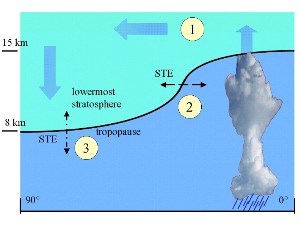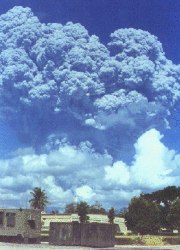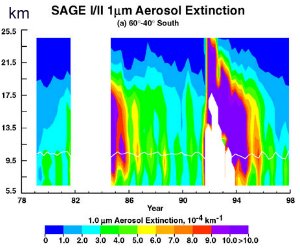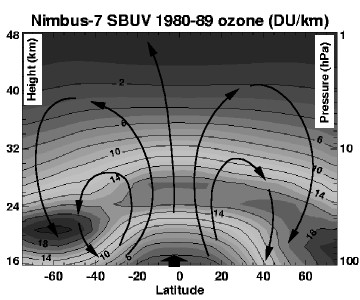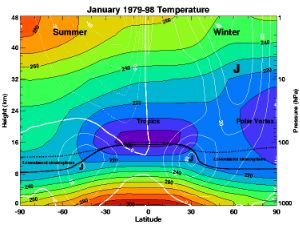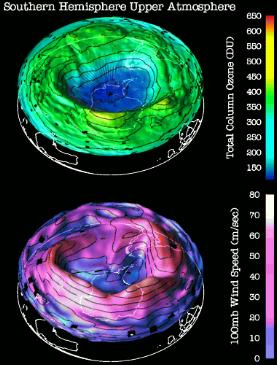 > English > Climate Encyclopaedia > Upper Atmosphere > more > 1. Dynamics & Aviation > - Dynamics
> English > Climate Encyclopaedia > Upper Atmosphere > more > 1. Dynamics & Aviation > - Dynamics
|
Upper AtmosphereRead more |
Dynamics of the StratosphereProcesses in the stratosphere take place very slowly compared to those in the troposphere. The stratosphere is extremely stable and there is only little air exchange with the troposphere. This small air exchange is, however, extremely important to our climate.
|
|
Exchange of air between the stratosphere and the troposphere can occur if layers of constant (potential) temperature cross the tropopause (point 2 on Figure 1) or if there are disturbances and convective transport occurs in the mid-latitudes (point 3). Vertical air exchange in the troposphere takes hours to days whereas mixing in the stratosphere takes months to years, This is why, after large volcanic eruptions such as Mount Pinatubo in 1991, it can take between one and two years for the stratosphere to return to its stable state. Have a look at the illustrations below to see the impact of this eruption. The small stratosphere-troposphere-exchange (STE) is an important source of ozone from the stratosphere to the troposphere. Stratospheric ozone initiates hydroxyl (OH) radical formation and the cycles of photochemical formation and destruction of ozone in the troposphere.
|
The tropospheric ozone budgetThere is a cycle of ozone formation and destruction in the troposphere. The major driver of this cycle is inputs of ozone from the stratosphere.
|
|
|
|
Brewer Dobson CirculationThe pattern of air movement around the atmosphere is known as the Brewer Dobson circulation. Since the processes which control this circulation pattern (the radiation budget of the Earth, planetary waves, subsistence processes in the polar vortex) are very complicated, we won't go into them in detail here. Very simply, air rises in the tropics and sinks at the poles, each hemisphere has its own circulation and exchange of air between the hemispheres is poor.
|
There are slight differences in how the air circulates in the Northern and Southern hemispheres. In the north, the distribution of oceans and land masses is more inhomogeneous than in the south and the polar vortex is weaker. In addition, seasons have to be taken into account. Figure 3. shows the average circulation through the year, but as the seasons and angle of the Sun change over the year, the position where air rises in the tropics shifts either to the north or to the south. Figure 4. shows how the temperature and wind patterns vary between the two hemispheres in January, this in turn causes the Brewer Dobson circulation to vary.
|
|
Polar VorticityThe polar vortex (very simply, a whirlwind) is a circumpolar wind which forms over both poles, more often over the Antarctic continent than over the Arctic. The Arctic vortex is less stable since the alternating surface of oceans and continents on the Earth disturbs the formation of the vortex. Very low temperatures can be reached within the Antarctic vortex and air from higher regions (containing compounds responsible for ozone hole destruction) can be sucked down to lower altitudes by the wind.
|
|
|
About this page:author: Dr. Elmar Uherek - Max Planck Institute for Chemistry, Mainz, Germany.
|

